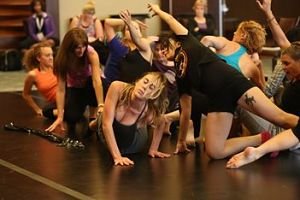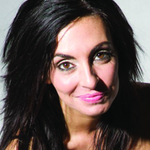Choosing to incorporate improvisation and/or choreography composition into your program is undoubtedly a great addition to enhance the dimension of a dancer’s educational training. Whether you tack it on at the end of modern class or devote a whole class to the genre itself within your curriculum, getting started on how to introduce the concepts can be overwhelming; since the material is so vast. Keeping in mind that the following ideas can be used as tools and lesson planning prompts for beginner-advanced levels, the more you delve into the lessons, the more you will discover infinite variations in where you can go with them and take your students. Soon enough you will see the amazing creative potential your students possess and a skill-set they have yet to tap into.
MOTIVATION, INTENT & CLARITY: Start students off with basic understanding of these terms prior to choreographing movement. What is their motivation or the catalyst that is prompting them to focus on a specific choreographic concept or theme; whether it be a story they want to tell, an interest in working with levels or space pathways, a piece of music that inspires them, etc? What is their intent? Meaning…what do they want their movement to suggest? What is its purpose and what are they trying to convey to their audience? Along with motivation and intent, remind them that the sense of clarity is what will bind these concepts together so that their creations translate. Students should be clear in their own minds on all these preparatory ideas and should always create scores with a clear “beginning, middle & end” as well, to take the audience on a journey with them.
MUSICALITY COMPONENT: Encourage students to forego the typical Top 40 hits and research music that is original, fresh and abstract. New choreography students might have a tendency to rely on music with lyrics to guide their movement creation, so try new things like having them choreograph without music, or find music sans lyrics, or research classical or world music….get them thinking out of the box. A lot of times I have my students choreograph without the addition of music where their movement comes from other inspirations. At the time of presentation, I often have them present their works where I will put my playlists on shuffle and let the accompaniment then be a random variable to their work. Try having them do it two or three times through with a different song every time and see how the scope of their movement changes in mood, dimension and texture! Within with the musicality component, also encourage students to work in different time signatures, eliminate counts all together and work on being sensitive to really “hearing” the nuances of the musical selection and how it supports the movement choices.
SPACE, TRAVEL & PATHWAYS: Students should initially learn the various ways to explore the space around them. Have them focus on concepts like: near space, far space, general space, level, shape, dimension (height, width, depth,) plane (vertical- “the door plane,” horizontal “table plane” sagittal-“wheel plane”) and get them to move and exhaust each concept individually & stationary and then progress to taking these ideas through travel. Pathways are also essential to understanding where their “traffic” will go in their works and how and where they want their movement to go within the space itself. Drawing out “floor maps” of the pathways is a great way to tangibly see where the piece is going and what areas of the stage are not being utilized.
TIME: This is a huge concept and the one of which can really take play on the feel and mood of choreography. Have your dancers play with timing in all capacities; again, first addressing concepts one at a time and exhausting possibilities of movement before moving onto the next. Look at basic manipulations including: tempo (fast, slow, medium-slow), momentum (effect of tempo), duration, meter, accenting & syncopation, stillness.
WEIGHT, ENERGY & FORCE: Have dancers examine the “flow” of their movement. Explore the heaviness, lightness, etc, of how weighted they want their movement to be and simultaneously whether that energy is passive or aggressive. Is the force of their creation strong or gentle? How does that translate back to what their original intent of their choreographic concept is?
EFFORT QUALITY: Along with energy, movement should also include effort quality differentiations. A basic way for students to begin to understand how movement can vary and dynamics are created, is by exploring movement in opposites: strong/gentle, sharp/fluid, staccato/sustained, straight/curvy, etc.
As you can see there are infinite concepts to tackle when introducing your students to choreography-composition. My advice is to start slow, isolating each concept one by one depending on the level of your students. By doing so, you are guaranteeing a true understanding of how to play with composition and build a foundation for grasping design and form. You are also giving them a vernacular which they can then manipulate and abstract as their choreography advances and becomes more sophisticated over the years!
Good luck!
See you in the dance studio,
Jessie


